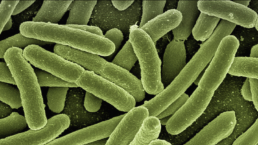The temperature-sensitive pathogens that caught U.S. communities off guard are a grim preview of the future.
by Zoya Tierstein, Grist
A 16-month-old boy was playing in a splash pad at a country club in Little Rock, Arkansas, this summer when water containing a very rare and deadly brain-eating amoeba went up his nose. He died a few days later in the hospital. The toddler wasn’t the first person in the United States to contract the freshwater amoeba, Naegleria fowleri, this year. In February, a man in Florida died after rinsing his sinuses with unboiled water — the first Naegleria fowleri-linked death to occur in winter in the U.S.
2023 was also an active year for Vibrio vulnificus, a type of flesh-eating bacteria. There were 11 deaths connected to the bacteria in Florida, three deaths in North Carolina, and another three deaths in New York and Connecticut. Then there was the first-ever locally transmitted case of mosquito-borne dengue fever in Southern California in October, followed by another case a couple of weeks later.

Scientists have warned that climate change would alter the prevalence and spread of disease in the U.S., particularly those caused by pathogens that are sensitive to temperature. This year’s spate of rare illnesses may have come as a surprise to the uninitiated, but researchers who have been following the way climate change influences disease say 2023 represents the continuation of a trend they expect will become more pronounced over time: The geographic distribution of pathogens and the timing of their emergence are undergoing a shift.
Recent Posts
Mayor Mamdani’s First Day, A Zero Hour Conversation With Richard Wolff
July 2, 2025
Take Action Now If elected, what would Mayor Mamdani do on his first day in City Hall? How would a democratic socialist govern as a big-city mayor?……
The U.S. Is Funding A Bloodbath At Gaza Aid Centers
July 2, 2025
Take Action Now The admin just gave $30M to GHF, the organization at the center of charges that Israel is weaponizing assistance and shooting at…
Feeding The Warfare State
July 1, 2025
Take Action Now We Lose, the Weapons Makers WinBy William D. Hartung, Tom Dispatch The Senate is on the verge of passing the distinctly misnamed…
The Rage Of Billionaires And The Frenzy To Stop Zohran Mamdani From Becoming New York’s Mayor
June 30, 2025
Take Action Now The constellation of forces now regrouping with a vengeance includes titans of Wall Street, enormous real estate interests,…




